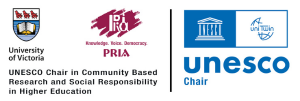 Over the past year, university campuses around the world have witnessed conflicts and tensions being played out in the larger society around them. Anti-colonial struggles in independent South Africa have found echo on campuses in #RhodesNoMore. Afro-descendants in Colombia, Mexico & Brasil have been struggling to gain visibility and identity in their ‘white-European’ majority world, while students on university campuses begin to experience the discomfort of their indigenous roots. University campuses in India have also been experiencing conflicts as the larger society begins to come to terms with structural exclusion of ‘Dalits’.
Over the past year, university campuses around the world have witnessed conflicts and tensions being played out in the larger society around them. Anti-colonial struggles in independent South Africa have found echo on campuses in #RhodesNoMore. Afro-descendants in Colombia, Mexico & Brasil have been struggling to gain visibility and identity in their ‘white-European’ majority world, while students on university campuses begin to experience the discomfort of their indigenous roots. University campuses in India have also been experiencing conflicts as the larger society begins to come to terms with structural exclusion of ‘Dalits’.
And now, American university campuses are likely to face the ‘white supremacist’ resurgence when new terms begin this Fall. Societal conflicts in the era of hyper-nationalism and ethno-centrism are intensifying the world over, and the universities are unlikely to remain unaffected.
Universities are embedded in their respective societies. Societal influences are naturally entering the campuses. Universities can proactively prepare to deal with new societal conflicts through planned, systematic and ongoing engagement with various sections of wider society. Instead of trying to ‘withdraw’ inside the walls of their respective institutions, universities can pursue an ‘engaged’ stance deliberately. This engagement can make university campuses sites of open, dialogical public spaces. ‘Engaged’ stance can be carried through in its curriculum & pedagogy, its research and service mandates as well.
International diversity of students and academics in universities is another approach to ‘engaged’ stance. This international diversity is particularly relevant as we prepare our youth as global citizens, able to navigate multiple cultures, languages and contexts with open and curious mind. Such an ‘internationalisation’ can also prepare counter-narratives to the contemporary waves of fierce nationalism around the world.
However, movement of students outside their countries has begun to stagnate lately. Much of the flow of international students is still to countries like USA and UK, though enrolments are lower now than before. Reverse flow of international students to countries like China and India has been largely inconsequential. Even those flows are under threat, resulting in university campuses becoming less ‘welcoming’ of international diversity.
A recent report from Association of Indian Universities (AIU) finds that fewer international students are coming to Indian universities. This is despite the Government’s suggestion that upto 15% of enrolment can have foreign students. That figure will amount to a staggering 4.85 million in India. In contrast, less than 30,000 foreign students are enrolled in Indian universities. On the other hand, more than 250,000 Indian students are studying in foreign universities.
Increased presence of foreign students on university campuses will enhance diversity. In addition to enhancing appreciation and tolerance of diversity, increased presence of international students on university campuses in India, for example, will further prepare our youth for global citizenship.
However, cultural and racial ethnocentrism has, of late, generated huge conflicts on university campuses in India. Other than questions about equivalence of qualifications (which can be readily addressed), many foreign students have complained of racial, cultural, gender and linguistic discrimination and harassment from fellow students.
University leadership can make their institutions embrace diversity through deeper stance of societal engagement, not by ‘hiding away’ from the realities around campuses.
Dr Rajesh Tandon August 22, 2017




